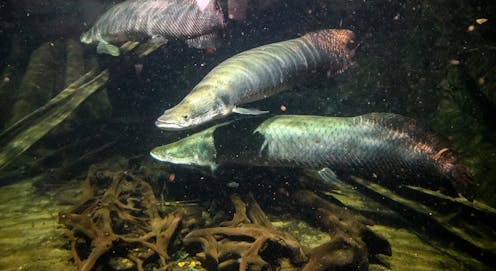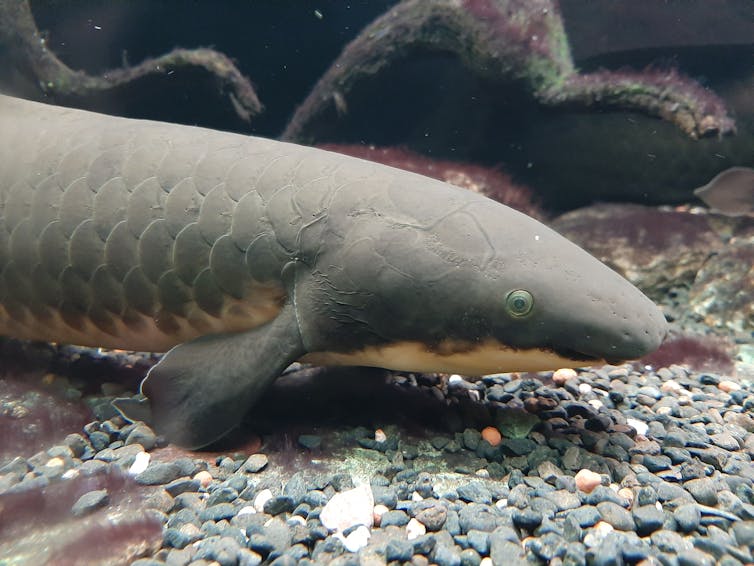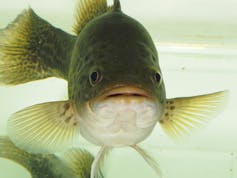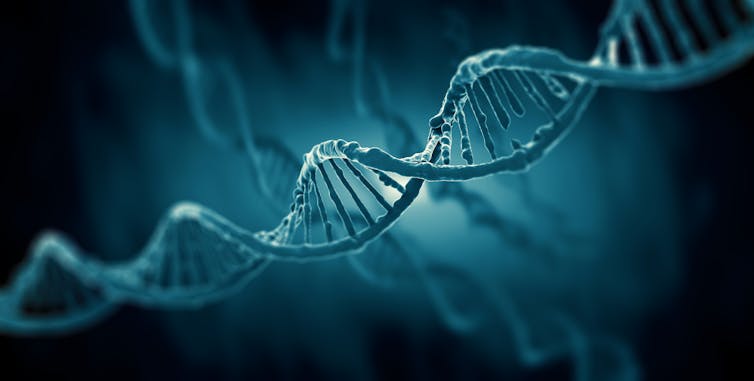Source: The Conversation (Au and NZ) – By Benjamin Mayne, Molecular biologist and bioinformatician, CSIRO

Shutterstock
Identifying the age of animals is fundamental to wildlife management. It helps scientists know if a species is at risk of extinction and the rate at which it reproduces, as well as determining what level of fishing is sustainable.
Determining the age of fish has been difficult in the past — primarily involving extracting the inner ear bone, also known as the “otolith”. Layers of growth in the otolith are counted like rings on a tree to reveal an individual’s age. Unless a dead specimen is available, this method requires killing a fish, making it unsuitable for use on endangered populations.
However a non-lethal DNA test developed by the CSIRO enables researchers to determine fish age for three iconic and threatened Australian freshwater species: the Australian lungfish, the Murray cod and the Mary River cod. We outline the technological breakthrough in our research just published.
Our fast, accurate and cost-effective test can be adapted for other fish species. We now hope to share this method to improve the protection of wild fish populations and help promote sustainable fisheries around the world.

Shutterstock
Iconic species at risk
Human activity has led to the population declines of the three Australian fish species at the centre of our research.
The threatened Australian lungfish is found in rivers and lakes in southeast Queensland. It’s often referred to as a “living fossil” because its extraordinary evolutionary history stretches back more than 100 million years, before all land animals including dinosaurs.
Man-made barriers in rivers reduce the movement of water, which lowers lungfish breeding rates.
Older lungfish do not have hard otolith structures, which makes determining their age difficult. Bomb radiocarbon, which analyses carbon levels in organic matter, has been used to age Australian lungfish, but this method is too expensive to be widely used.

The threatened Murray cod is Australia’s largest freshwater fish. The Mary River cod is one of Australia’s most endangered fish, found in less than 30% of its former range in Queensland’s Mary River.
Habitat destruction and overfishing are major threats to Murray cod and Mary river cod populations.
Otoliths can be used to determine age for both these cod species, however this has only been done on a population-wide scale for the more prevalent Murray cod.
Read more:
Australia’s smallest fish among 22 at risk of extinction within two decades

Our DNA breakthrough
When cells divide to make new cells, DNA is replicated. This can lead to DNA methylation, which involves the addition or the loss of a “methyl group” molecule at places along the DNA strand.
Research has found the level of DNA methylation is a reliable predictor of age, particularly in mammals, including humans.
To develop our test, we first worked with zebrafish. This species is useful when studying fish biology because it has a short lifespan and high reproductive rates. We took zebrafish whose ages were known, then removed a tiny clip of their fin. We then examined DNA methylation levels in the fin sample to identify the fish’s age.
Following this successful step, we transferred the method to Australian lungfish, Murray cod and Mary River cod. Again, we used fish of known ages, as well as bomb radiocarbon dating of scales and ages determined from otoliths.
We found despite the zebrafish and the study fish species being separated by millions of years of evolution, our method worked in all four species. This suggests the test can be used to predict age in many other fish species.

Shutterstock
A conservation management boom?
In the same way human population demographers use census data to understand and model human populations, we now have the tools to do this with animals.
We are looking to expand this DNA-based method to determine the age of the endangered eastern freshwater cod and trout cod. We will also continue to test the method across other species including reptiles and crustaceans.
This work is part of CSIRO’s ongoing efforts to use DNA to measure and monitor the environment. This includes estimating the lifespan of vertebrate species such as long-lived fish and surveying biodiversity in seawater using DNA extracted from the environment.
We envisage that in the not too distant future, these methods may be used by other researchers to better understand and manage wild animal populations.
Read more:
A new study shows an animal’s lifespan is written in the DNA. For humans, it’s 38 years
![]()
Benjamin Mayne does not work for, consult, own shares in or receive funding from any company or organisation that would benefit from this article, and has disclosed no relevant affiliations beyond their academic appointment.
– ref. Breakthrough allows scientists to determine the age of endangered native fish using DNA – https://theconversation.com/breakthrough-allows-scientists-to-determine-the-age-of-endangered-native-fish-using-dna-162084







